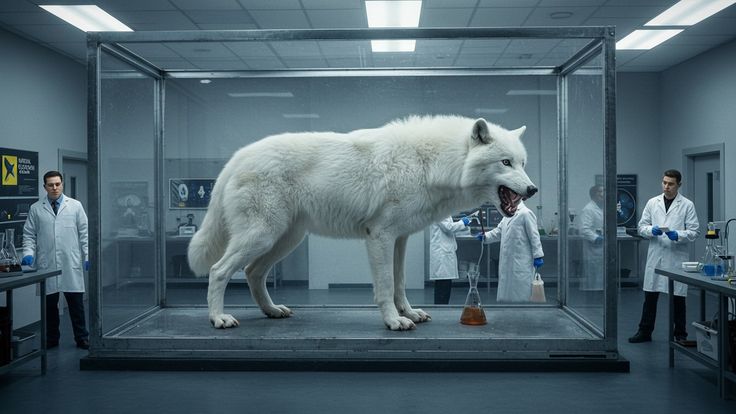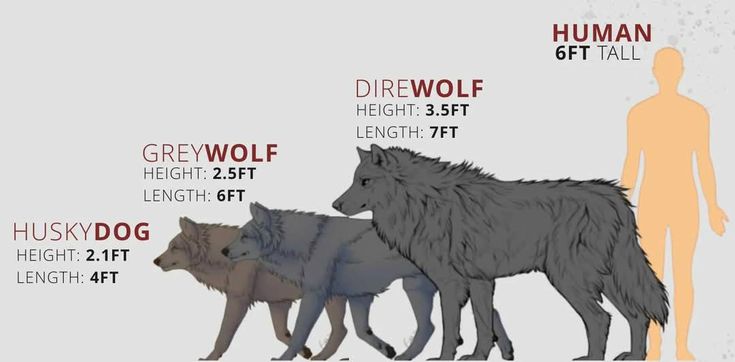Dire Wolf Reborn After 10,000 Years – A Shocking Comeback!
A dire wolf has been genetically revived after 10,000 years. Discover how science brought back this extinct predator and what it means for our future.
Dire Wolf Returns: Extinct Predator Revived in Lab After 10,000 Years
Science revives the prehistoric beast once feared by mammoths — how it compares to modern wolves and what it means for the future of de-extinction.

In a groundbreaking experiment that blurs the line between science fiction and reality, a leading genetics lab in the United States has revived the legendary dire wolf, a fearsome predator that last roamed Earth more than 10,000 years ago. This stunning scientific breakthrough has reignited debates about the ethics of de-extinction, animal control, and the potential dangers of bringing back extinct megafauna.
What Is a Dire Wolf?
The dire wolf (Canis dirus) was a massive prehistoric predator that lived during the Late Pleistocene epoch, thriving across North and South America. Weighing between 60 to 80 kilograms (130–175 pounds), it was more muscular and robust than today’s gray wolves. With its strong jaws and bone-crushing teeth, the dire wolf hunted large prey such as horses, bison, and young mammoths.
Unlike the dire wolves in pop culture—such as those featured in Game of Thrones—the real animal was a distinct species, not just a giant gray wolf. Recent DNA analysis revealed it wasn’t even in the same genus as modern wolves, making it a separate evolutionary lineage that diverged over 5 million years ago.
The Science Behind the Resurrection
The breakthrough comes from Colossal Biosciences, a private U.S.-based biotech company focused on ancient DNA. Using advanced CRISPR gene-editing technology, scientists managed to reconstruct the dire wolf genome using fossil DNA recovered from specimens found in the La Brea Tar Pits in California.
They then used somatic cell nuclear transfer—the same method used to clone Dolly the sheep—to implant the edited DNA into a surrogate animal. After several failed attempts, a live dire wolf pup was born in early 2025. Now six months old, the pup is being carefully studied in a high-security, enclosed biosphere.
Lead researcher Dr. Eliza Moran stated, “This is not just cloning—it’s precise genetic reconstruction. We’ve recreated an extinct predator cell by cell.”

Dire Wolf vs Modern Wolf: Key Comparisons
| Feature | Dire Wolf (Canis dirus) | Gray Wolf (Canis lupus) |
|---|---|---|
| Weight | 60–80 kg | 30–50 kg |
| Build | Heavier, more muscular | Lean and agile |
| Skull | Larger, broader, stronger bite force | Narrower skull |
| Teeth | Thick, bone-crushing molars | Sharp, slicing teeth |
| Temperament | Likely more aggressive and territorial | Highly social, pack-driven |
| DNA similarity | ~25% overlap | N/A |
Notably, dire wolves were not ancestors of modern wolves. While they looked similar due to convergent evolution, they were as genetically distinct from today’s wolves as lions are from tigers.
How Dangerous Is the Revived Dire Wolf?
Experts warn that this creature is not simply a “big wolf.” Its behavior, instincts, and environmental needs remain unpredictable. With stronger jaws and greater physical power, the dire wolf was an apex predator in its time—capable of taking down large herbivores and defending territory against other carnivores.
Dr. Moran emphasized that the revived dire wolf will not be released into the wild. “We’re not trying to build Jurassic Park,” she said. “This is about scientific understanding, not spectacle.”
However, concerns remain. If such technology falls into the wrong hands, or if animals escape captivity, the consequences could be catastrophic.
Public Reaction and Ethical Debate
The resurrection has sparked worldwide excitement—and controversy. Some scientists applaud the achievement as a step toward restoring lost biodiversity and healing ecological damage caused by human activity. Others warn that reviving extinct species could disrupt modern ecosystems, introduce new diseases, or distract from saving endangered species that still exist.
Animal rights groups are also raising red flags, questioning the morality of creating creatures that may suffer in captivity without a natural environment.
The Future of De-Extinction
ChronoTech Labs has hinted at future plans to revive other extinct species, including the woolly mammoth and the Tasmanian tiger. If the dire wolf experiment proves viable and safe, we may be witnessing the beginning of a new era in conservation biology—or unleashing powers humanity is not ready to control.
As one commentator put it, “We have brought back a ghost from the Ice Age. Now we must ask: can we live with it?”
Please support my youtube channel
